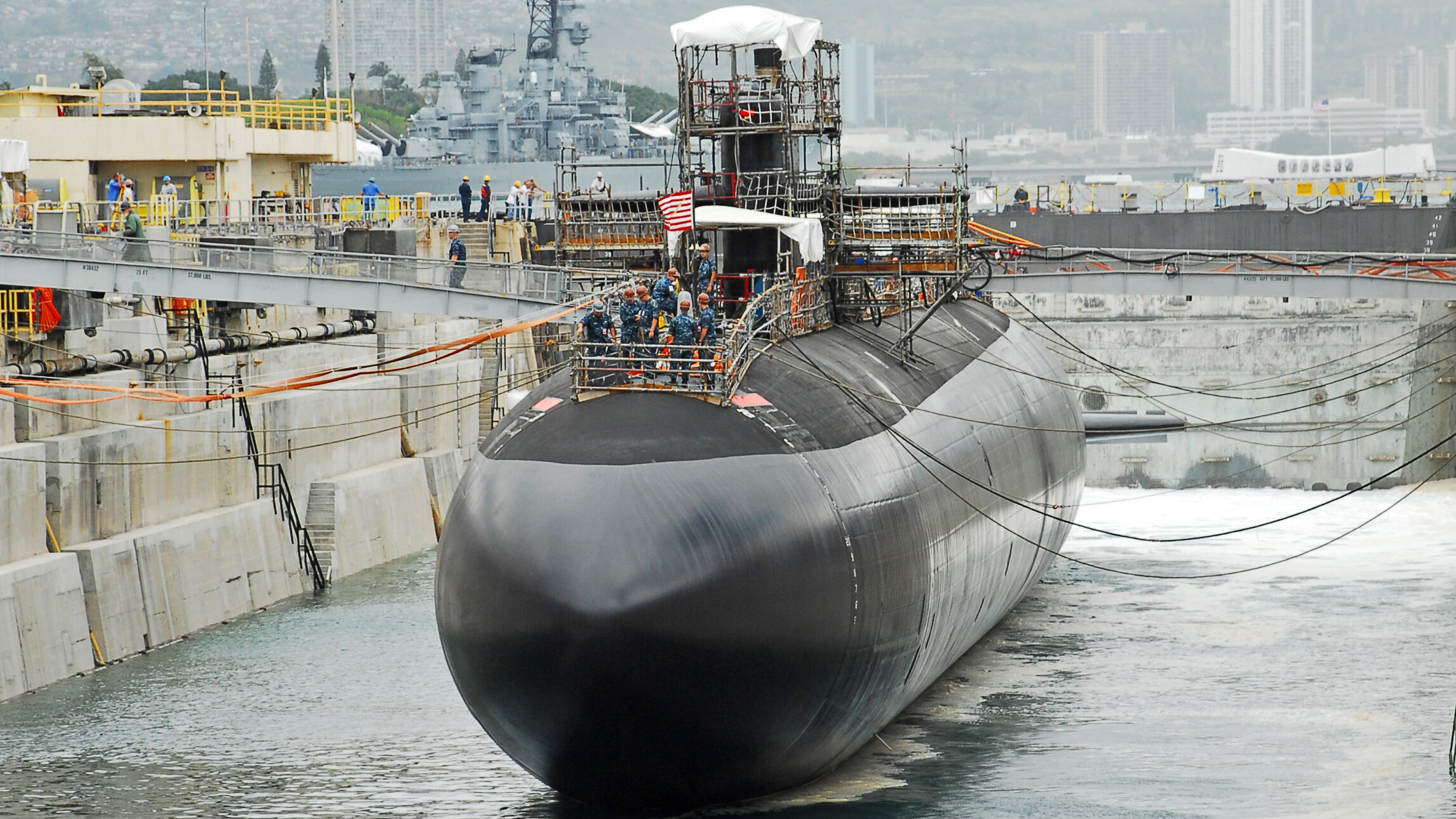
A dry dock at the Pearl Harbor Naval Shipyard is flooded during the undocking of a Los Angeles-class fast attack submarine. (Photo by Petty Officer 3rd Class Dustan Longhini)
SEA AIR SPACE 2022: Two influential congressmen overseeing the Navy’s shipyards are convinced the service’s plan to revamp its facilities requires greater urgency and funding, but faces hurdles far from the shipyards themselves — many of them on Capitol Hill.
“It’s been so long since the Navy has sort of really taken this on and the country has taken this on in a big way,” Rep. Joe Courtney, D-Conn., said of the Navy’s plans to revitalize the four public shipyards, also called the Shipyard Infrastructure Optimization Program (SIOP).
Rep. Rob Wittman, R-Va., said part of the issue lies in Congress, where lawmakers have to worry about stepping on each other’s toes.
“This is a cross jurisdictional issue for the Congress to deal with. I wish it was as simple as putting it into the [defense policy bill] and making it happen. But unfortunately, many of these are [military construction] projects,” he said in the same discussion with Courtney during the Sea Air Space exposition.
The two congressmen are the longstanding leaders of the House Armed Services subcommittee on seapower and projection forces. They have their frustrations with the Navy’s progress, and say the Navy’s 20-year timeline isn’t quick enough.
But they also recognized a bottleneck in Washington, DC, citing, for example, a recent failed push in Congress to infuse the SIOP with most of its necessary funding.
Alongside other lawmakers, Wittman attempted to add $25 billion to the Fiscal Year 2022 National Defense Authorization Act that would have funded the entire program in a single year. But the money failed to survive in the final legislation.
RELATED: Another $25B boost, this time for shipyards, proposed for NDAA
Asked whether the Navy or Congress was slowing things down, Wittman suggested there was work to be done in Congress and that part of the issue is convincing people — outside of the House Armed Services Committee — that this needs to be a top priority.
“I think everybody, members of Congress, including Joe and myself and others need to start making the argument in a broader expanse rather than just” the committee, he said. “If we don’t invest now, we are not going to have the talent all of a sudden to press the gas pedal and put all of these projects into place to modernize both our private and our public yards.”
Although Wittman and Courtney collectively can influence the Navy’s shipbuilding budget, the funding for SIOP is an issue monitored by the House panel’s readiness subcommittee. Beyond that, funding in the defense policy bill does not equate to cash in hand. Even if the readiness panel gets onboard, the panel must make its case to the appropriations committee.
On the Navy’s side of things, another issue mentioned only briefly during congressional hearings are cost overruns occurring at different shipyards. Courtney said the nascent cost estimates industry has offered to the Navy “are coming in much higher than what was anticipated.”
He also argued some amount of “muscle memory” has been lost due to how infrequently the Navy and industry work on the redesigning and modernizing a facility such as a public shipyard.
He echoed Wittman’s comments, saying that the public shipyards have never had “constituencies” in the same way that other major military programs manage to attract by way of the jobs they create.
“There was never a constituency for public shipyards,” he said. “It’s a different kind of animal than other defense platforms.”
“We know this is something we can’t avoid any longer and we’re going to pay a little price for that in terms of just the both the cost and the execution,” he added.






















